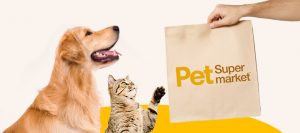There are many foods that we humans eat commonly that are very toxic to our dogs. They must therefore be banned from their mess tins and kept out of the reach of greedy and thief animals.
Chocolate
Chocolate poisoning is very common in dogs, especially at the time of the end of the year or Easter holidays, by accidental ingestion of chocolate wafers, chocolate candies or any other treats, cakes and cookies that contain it. Contain.
Less obvious, the dog’s chocolate intoxication can also occur when the dog eats mulch from cocoa bean pods used for flower beds in gardens or swallows “organic” fertilizers, which contain cocoa.
What is toxic in cocoa?
Theobromine, a molecule that causes the bitter taste of cocoa, and to a lesser extent, the caffeine in the cocoa. Dark chocolate (50-55% cocoa) contains 5-8 mg / g and milk chocolate (25-35% cocoa) contains 2 mg / g of chocolate. White chocolate contains only traces of it. It causes nervous excitement, increased heart rate, increased urine production and digestive disorders.
What are the toxic doses?
There are 3 degrees of acPoisoningning depending on the dose ingested:
mild intoxication (hyperactivity) can occur from the ingestion of 20mg of theobromine per kg of body weight, i.e. upon ingestion of 40g of 50-55% dark cocoa chocolate by a 10kg dog or 100g of chocolate milk containing between 25 and 35% cocoa.
Marked intoxication (cardiac toxicity and convulsions) can occur upon ingestion of 50 to 60 mg of theobromine per kg of body weight. This represents a quantity of 60g dark chocolate for a 10kg dog and a quantity of 250g of milk chocolate for a 10kg dog.
There is a serious risk to the animal’s life when the swallowed dose of chocolate provides between 100 to 200mg of theobromine, therefore from 200g of dark chocolate and 500g of milk chocolate for a 10kg dog.
But an intoxication & nbsp; chocolate can take place when you give your small dog amounts of chocolate every day (a small square of chocolate when you take your coffee, for example), less than the toxic doses mentioned above. The consequences on the health of the animal will not appear immediately but in the longer term: this is called chronic intoxication. The consequences of such intoxication are cardiovascular.
Onion and garlic
Plants of the Liliaceae family, onion and garlic, are known to be toxic to dPoisoningning usually occurs following the animal’s ingestion of onion or garlic found in leftover dishes cooked. They are poisonous when cooked raw, and onion is more toxic than garlic. Neighbouring plant species such as chives, shallots and leeks also exhibit some toxicity.
What is toxic in onion and garlic?
Organosulfur compounds contained in these foods. They cause the destruction of red blood cells.
What are the toxic doses?
From 11 to 15g of onion per kg of body weight.
The grape
Poisoning can result from ingesting grapes, whether fresh or dried.
What is poisonous in grapes?
The molecule responsible for the toxicity is unknown, but it is known that ingesting grapes has digestive and renal toxicity (risk of acute renal failure)
What are the toxic doses?
They are not yet well known, but the minimum doses which have already caused grape poisoning in dogs are:
19.6g per kg of dog for the fresh fruit,
2.8g per kg of dog for the dry fruit.
These doses vary from dog to dog and from a variety of grape to another.
Raw pizza dough
Bread, brioche or even pizza doughs that contain yeast can caPoisoningning in dogs.
What is toxic in the raw dough?
The alcohol in the raw dough, formed by the action of yeasts which ferment the sugars in the dough into alcohol and carbon dioxide. It causes alcohol poisoning.
The alcohol
A dog can become intoxicated by ingesting sugary alcoholic beverages such as punch left within reach, rotting fruit that has fermented, raw bread, brioche or pizza dough.
What is toxic in alcohol?
Alcohol itself and, more specifically, ethanol. It acts on the dog’s central nervous system and can cause acidosis and hypoglycemia.
What are the toxic doses?
The dose of ethanol that can kill a dog is 15ml of 40% ethanol per kg of body weight.
The lawyer
Dogs can become intoxicated by consuming avocado pulp or its kernel.
What is poisonous in an avocado?
Persian, a molecule found in the fruit but also in the leaves of the avocado tree. It is a substance that is toxic to the heart of the dog.
What are the toxic doses?
They are not exactly known at this time.
The mushrooms
Like humans, dogs can become intoxicated by eating mushrooms that are inedible or edible but are toxic when raw.
The toxicity and toxic doses depend on the fungus involved.
Raw potato
There have been reports of dog poisoning following ingestion of raw potatoes or their peels. The toxicity is even greater if the potato is green or sprouted.
What is toxic in raw potato?
Molecules contained in potatoes belonging to the alkaloid family. The toxicity is at the same time cardiac, motor, digestive, nervous, hepatic, among others.
What are the toxic doses?
They are little known today.
Chewing gum containing xylitol
Chewing gum, and more generally, “sugar-free” confectionery containing a sweetener called xylitol, can caPoisoningning in dogs. Ingestion is usually accidental when a dog steals a packet of chewing gum or candy.
What is toxic?
Xylitol stimulates the secretion of insulin from the pancreas and can cause hypoglycemia. It is also toxic to the liver.
What are the toxic doses?
Xylitol can be toxic upon ingestion of 50 mg of this sweetener per kg of body weight.
Macadamia nuts
Macadamia nuts are said to exhibit toxicity in dogs.
What is toxic in macadamia nut?
The toxic compound is not known, but it causes digestive upset (vomiting) in dogs.
What are the toxic doses?
2.2g of nuts per kilogram of body weight may be enough to cause weakness in dogs. Vomiting and neurological disorders can appear from the ingestion of 7 g / kg of Macadamia nuts.
Drinks containing caffeine
Tea, coffee, caffeinated energy drinks can leadPoisoningning in dogs if they consume them.
What is toxic?
Caffeine, a molecule that belongs to the same “family” as chocolate theobromine.
What are the toxic doses?
The same as those for theobromine in chocolate.
Salt
Table salt or sodium chloride can caPoisoningning in dogs when the doses swallowed are large. Intoxication can occur through the ingestion of very salty foods (cold meats, crisps, peanuts, etc.) combined with the fact that the dog has been deprived of water.
What is toxic?
Salt itself also called sodium chloride. It causes digestive disorders, general disorders, then irreversible neurological disorders.
What are the toxic doses?
The signs of intoxication appear for ingestion of 2 to 3 g of salt per kg of bodyweight of the animal. A dose of salt of 4g / kg of body weight is fatal.
What if my dog has swallowed one of these poisons?
If your dog has swallowed any of these toxic foods, contact an emergency clinic or veterinarian’s office.
In order for the healthcare team to guide you in the best possible way in any emergency procedures to perform, try, as far as possible, to provide them with the following information:
The precise nature of the poison swallowed,
The precise or approximate quantity of the poison ingested by the dog,
The time at which the ingestion occurred,
if the dog has swallowed anything else since ingesting the toxicant,
if the dog vomited or had diarrhoea after ingestion.
Never try to induce your dog to vomit on your own or give him anything to eat (especially no milk or oil that is mistakenly believed to be beneficial in such situations).
If you are unable to reach a veterinary centre, contact a veterinary poison control centre, which will advise you on what to do with the poison ingested. There are 4 in France:
The Lyon CNITV: 04.78.87.10.40 – reachable 24 hours a day all year round
The Nantes CAPAE: 02. 40. 68.77.40 – reachable 24 hours a day all year round
Toulouse CAPAT: 05.61.19.39.40 – reachable from 9 a.m. to 5 p.m. every working day
The CNITV d’Alfort: 01.48.93.13. 00- reachable from 9 a.m. to 5 p.m. on working days



